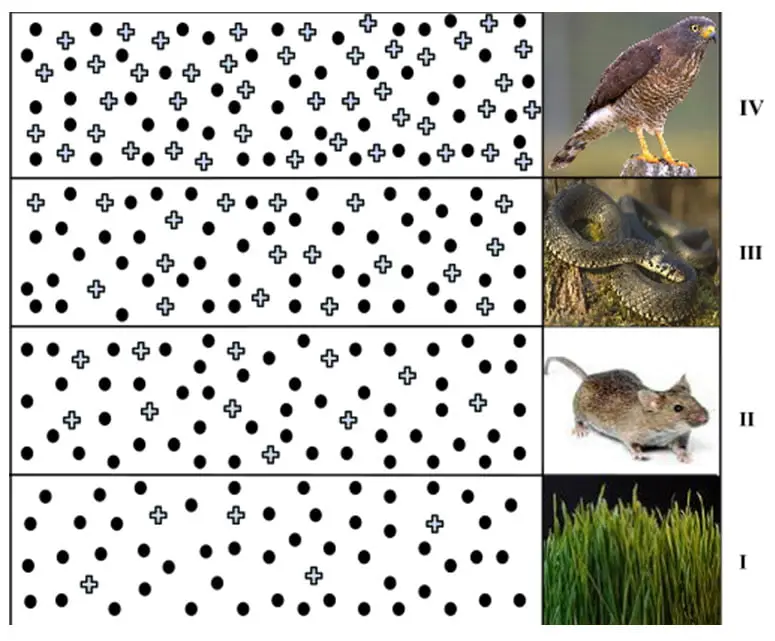What is Panchakarma?
Panchakarma is ayurvedic systemic detoxification procedure in which Body toxins are removed from body. Vaman – virechan – Basti – Nasya – Raktamokshan are main Panchakarma detoxification measures.
What are causes of cancer?
Carcinogens are physical trauma, chemical substances, mental stress, environment etc. All carcinogens effect DNA and damaged it. This is called mutation which lead to uncontrolled cell growth – cancer.
Use of pesticides in India increases day by day

Biomagnification of Pesticides
The figure shows how DDT becomes concentrated in the tissues of organisms representing four successive trophic levels in a food chain. The concentration effect occurs because DDT is metabolized and excreted much more slowly than the nutrients that are passed from one trophic level to the next. So DDT accumulates in the bodies (especially in fat). Thus most of the DDT ingested as part of gross production is still present in the net production that remains at that trophic level.

Fig.: In biomagnification the concentration of the persistent toxins (crosses) increase higher up the food chain. An increase of toxin concentration as the food chain moves up to higher levels. Organisms at the top have a higher tissue concentration of toxins and pollutants than lower levels. The concentration system is due to persistence of the toxins, food chain energetics, and low rate of internal degradation or excretion of the substance. Trophic level I represents the primary producers. Trophic level II represents the primary consumers. Trophic level III represents the secondary consumers. Trophic level IV represents the tertiary consumers. Image used with permission (CC CC-SA 3.0).
This is why the hazard of DDT to nontarget animals is particularly acute for those species living at the top of food chains.
For Example
Spraying a marsh to control mosquitoes will cause trace amounts of DDT to accumulate in the cells of microscopic aquatic organisms, the plankton, in the marsh.
In feeding on the plankton, filter-feeders, like clams and some fish, harvest DDT as well as food. (Concentrations of DDT 10 times greater than those in the plankton have been measured in clams.)
The process of concentration goes right on up the food chain from one trophic level to the next. Gulls, which feed on clams, may accumulate DDT to 40 or more times the concentration in their prey. This represents a 400-fold increase in concentration along the length of this short food chain.
There is abundant evidence that some carnivores at the ends of longer food chains (e.g. ospreys, pelicans, falcons, and eagles) suffered serious declines in fecundity and hence in population size because of this phenomenon in the years before use of DDT was banned (1972) in the United States.
How Carcinogens damage cells?
- In our routine diet we take so many pesticides unknowingly.
- Pesticides are not soluble in water so body can’t remove it by urine and stool.
- Carcinogens in form of pesticides are accumulated in body mainly in Fat tissues.
- These pesticides deposited in fat and not easily removed by body thus in long term accumulated poison cause cell damage and trigger cancer.

